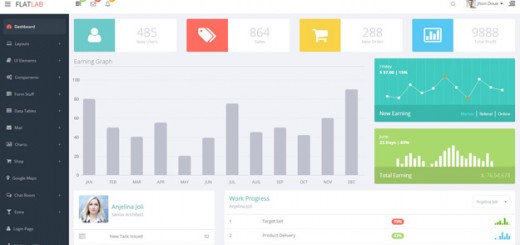A quick test. Can you tell the difference between the paintings of Edouard Manet and those of Claude Monet? Can you quickly recall the crisp silhouettes of one artist and the blurry landscapes of another? What does a Google search page look like? We think you answered the last question faster! Without closing your eyes, it was easy to imagine the familiar splash screen with another stylized illustration. Yes, we live online. And we do not regret it much. Here “everything is equally far and equally close.”

With Manet and Monet, it’s harder, but hopefully a new unusual site with paintings by artists of the last century will remedy the situation. A modern resource at the intersection of art and business with enigmatic interactive solutions based on augmented reality – WebAR!
Some two decades ago, no one thought about the beauty and convenience of websites. They simply carried information. But the world does not stand still, information technology works wonders. Our view of how the site should look like, has changed. The principles of web design acquire new rules, changing requirements and approaches.
The chief creator of Cordus Technologies Canada kindly agreed to share with us the secrets of good web design. Let’s listen to the opinion of a professional.
How to Make a Good Website Design?
A site with good web design is aesthetically pleasing. It contains adaptive design elements, interesting and accessible content. Clear and structured navigation allows users to move quickly and easily within the site.
Proper web design includes five principles:
1. Usability. The website must be user-friendly and simple, so the user can easily find what he is looking for.
2. Adaptive Design. Regardless of whether the user uses a phone, tablet or desktop, the site must “adjust” to different sizes of devices, displaying content without visible changes.
3. Clear Navigation Structure. Navigation should be intuitive, with pages with clearly labeled headings and links so that the user knows where he goes.
4. Engaging Content. Quality content on the site is of paramount importance. Not only the text is important, but also the visuals – photos, videos. Emotions keep the user! The more emotions a user will have what he sees on the screen, the longer he will stay on the site. We come back to the place where it was interesting and good, where we can learn something new and useful.
5. Accessibility. The basic web design principle – the site should be easily accessible. It is worth carefully monitoring the time and speed of his loading. If you do not optimize these parameters, the user will not be long to wait and leave the resource before something can see. A special place in web design is the adaptation of the site for those who have to use alternative methods of perception of information, such as programs for reading from the screen due to various disorders (e.g. vision loss). Alternative site support should include: soundtracks, improved color contrast settings, the ability to enlarge the font, tabs of key points, labeling images.
Keep it Simple
Almost every guideline for website design starts with the words that a quality web resource should be unique, attractive and convenient. Interesting and useful, over time it becomes customary and indispensable.
Regardless of what industry or platform you create a website for, make it as simple as possible. Don’t overcomplicate the navigation, don’t overload it with text and color. Visual clutter overcrowded with a lot of elements pages will not do much good. Minimalism, unusual graphics, visual effects hold attention and do not irritate. Most likely, the user will want to return to the site more than once.
By the way, the company Cordus Technologies, creating simple and easy web solutions for each new project, develops a unique design concept of “four components”: recognition, contact with the audience, universal structure and adaptability. Layouts of future pages are rendered in accordance with user patterns according to all the laws of web design.
Unusual and Memorable Site
Modern web design is based on the principles of emphasis, contrast, balance, alignment, repetition and ease of perception.
To create an unusual, memorable site uses the following techniques of web design:
# Emphasis. On each Web page highlight the important and significant elements.
# Balancing. The distance between the elements, letters and lines significantly affect the perception of the material, the readability of content. The visual load should be distributed within each web page.
# Alignment. Text, design, buttons, menu bar, banners, header and footer and content should be ordered, aligned with the borders and lines of the screen.
# Repetition. A common stylization approach unifies the site. Repetition of the same elements, colors, outlines, lines, fonts, images makes it easier to see.
# Color contrast. To highlight text and highlight buttons use a common approach to color and its contrast.
Gradient. Apply a gradient to titles, logos, buttons and backgrounds.
Beauty or Design?
A good site and a good design? Which is more important? Does the site have to be beautiful? Aesthetically, beauty is a subjective concept. Yes, it attracts the viewer and can hold attention, but the main purpose of web design is functionality to solve a problem.
A good site is easy to navigate, has user-friendly navigation, a memorable URL, and works across multiple browsers. That’s it – these are the basic rules of good website design (website design rules). Design is about functionality and form, they work together!
Top websites design company allows the team to bring functionality and form together. Develop unusual web products, bring to life the best web design ideas for new application services, news portals, distance learning systems, and business sites.
The high-end web solutions of Cordus Technologies Inc. – is unusual branding, complex interfaces, web resources of any level of complexity.
Good web design branding can turn an ordinary website into a work of art. Think of Manet and Monet. The art gallery is far away, an album of reproductions is pretty hard to find. But we can, when we open the site, freeze in the midst of the beautiful and almost real world of online painting.




